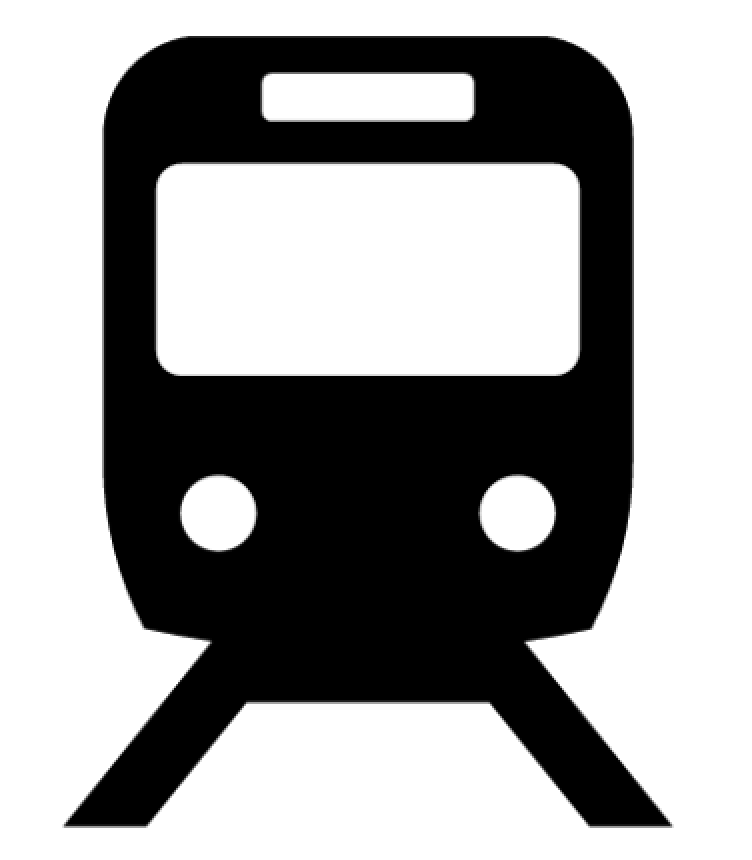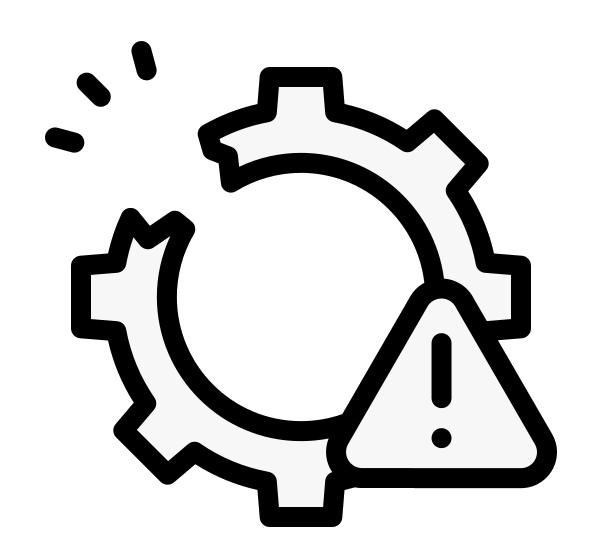| Re: The opposite effect of the runaway train coming over the hill...... Posted by plymothian at 14:36, 13th June 2024 |     |
There was a thread recently where someone explained how airbrakes and handbrakes work on trains. I don't understand why the airbrakes didn't stop the detached carriages. Can anyone explain that?
Modern trains in most countries are fitted with "two pipe air brakes" If in good working order such a brake will stop both portions of a divided train. The brakes are applied by compressed air stored in a tank under each vehicle.
This brake application is ONLY TEMPORARY, until the air leaks away. In an emergency the hand brakes should be used, or wheel scotches placed under the wheels.
A few years ago a disaster occurred in Canada when a train of oil tankers was left unattended on a gradient held only by the air brake. The locomotive was left running to supply air and keep the brakes applied. Unfortunately the engine stopped, and after some time the air leaked away, and the train ran unhindered to its destruction. Dozens of lives were lost and the destruction was substantial.
Before leaving the train unattended, sufficient handbrakes should have been applied, rather than relying only on the air brake.
Lac-Mégantic.
The loco was shut down by firefighters. Once the air in the airbrake had leaked away, this put too much strain on the handbrakes, of which an insufficient number had been applied.
| Re: The opposite effect of the runaway train coming over the hill...... Posted by Witham Bobby at 10:15, 13th June 2024 |     |
There was a thread recently where someone explained how airbrakes and handbrakes work on trains. I don't understand why the airbrakes didn't stop the detached carriages. Can anyone explain that?
Modern trains in most countries are fitted with "two pipe air brakes" If in good working order such a brake will stop both portions of a divided train. The brakes are applied by compressed air stored in a tank under each vehicle.
This brake application is ONLY TEMPORARY, until the air leaks away. In an emergency the hand brakes should be used, or wheel scotches placed under the wheels.
A few years ago a disaster occurred in Canada when a train of oil tankers was left unattended on a gradient held only by the air brake. The locomotive was left running to supply air and keep the brakes applied. Unfortunately the engine stopped, and after some time the air leaked away, and the train ran unhindered to its destruction. Dozens of lives were lost and the destruction was substantial.
Before leaving the train unattended, sufficient handbrakes should have been applied, rather than relying only on the air brake.
Air pressure in the train pipe keeps the brakes off. Lack of pressure on one side of the brake cylinder applies the brakes. This is the fail-safe system and is why the brakes of a divided train are automatically applied as the pipes are parted
| Re: The opposite effect of the runaway train coming over the hill...... Posted by broadgage at 23:17, 12th June 2024 |     |
There was a thread recently where someone explained how airbrakes and handbrakes work on trains. I don't understand why the airbrakes didn't stop the detached carriages. Can anyone explain that?
Modern trains in most countries are fitted with "two pipe air brakes" If in good working order such a brake will stop both portions of a divided train. The brakes are applied by compressed air stored in a tank under each vehicle.
This brake application is ONLY TEMPORARY, until the air leaks away. In an emergency the hand brakes should be used, or wheel scotches placed under the wheels.
A few years ago a disaster occurred in Canada when a train of oil tankers was left unattended on a gradient held only by the air brake. The locomotive was left running to supply air and keep the brakes applied. Unfortunately the engine stopped, and after some time the air leaked away, and the train ran unhindered to its destruction. Dozens of lives were lost and the destruction was substantial.
Before leaving the train unattended, sufficient handbrakes should have been applied, rather than relying only on the air brake.
| Re: The opposite effect of the runaway train coming over the hill...... Posted by Mark A at 08:38, 12th June 2024 |     |
The above came up for "On this day" - 12th June 1889 for the Armagh disaster.
The site still to be seen, the two portions of the train colliding on the tree shrouded embankment visible from the road leading east from Armagh. While it's no longer part of Ireland's rail system, that earthwork is still a prominent feature in the landscape.
Mark
https://tinyurl.com/3zjmuy2h
| Re: The opposite effect of the runaway train coming over the hill...... Posted by grahame at 03:21, 12th June 2024 |     |
Runbacks have had some dreadful consequences in the past ...
https://en.wikipedia.org/wiki/Armagh_rail_disaster
... not unknown even in recent times in the UK ... engineering trains seem to be the worst culprits these days - recent case at Grayrigg and on Fife as I recall.
https://en.wikipedia.org/wiki/Armagh_rail_disaster
... not unknown even in recent times in the UK ... engineering trains seem to be the worst culprits these days - recent case at Grayrigg and on Fife as I recall.
The above came up for "On this day" - 12th June 1889 for the Armagh disaster.
Since that post, we had the lowland sleeper run away ... where fortunate circumstances brought the train to a halt without damage. Accident report mirrored (here) and discussed on the forum at http://www.passenger.chat/21992
At about 07:25 hrs on Thursday 1 August 2019, the driver of the Edinburgh portion of the Lowlander sleeper service from London Euston was unable to control the train’s speed on the approach to Edinburgh. He was unable to comply with the maximum permitted speed at Haymarket East Junction, and would have been unable to stop the train before the junction if there had been a conflicting train movement. The driver was also unable to stop the train at Edinburgh Waverley station. The train came to a stop approximately 650 metres beyond its intended stopping point at Edinburgh Waverley platform 11, after the train manager operated an emergency button in a coach.
| Re: The opposite effect of the runaway train coming over the hill...... Posted by stuving at 09:00, 11th April 2018 |     |
There was a thread recently where someone explained how airbrakes and handbrakes work on trains. I don't understand why the airbrakes didn't stop the detached carriages. Can anyone explain that?
Despite the wording of most reports, this was not an accidental detachment - the train reverses at Titlagarh and the engine (or engines) was running round. It takes a long time to recharge the air brake in a train that length, so it's usual to close the open end(s) with a valve. Something else (in this case a form of wheel chock) is required to hold the train still during the manoeuvre, and in this case staff have been suspended on the grounds they didn't do that.
I still don't know what brake system was in use here, but with a bit more time I've concluded that my reasoning isn't relevant here. 22 carriages isn't "long" - and even a really long freight train can be parked temporarily using the air brakes.
However, the detach - run round - reattach process calls for the air cocks to be manipulated in the right sequence, and it's possible to get that wrong. So I'd guess from the reports that some secondary brake (scotching) was mandated just in case.
| Re: The opposite effect of the runaway train coming over the hill...... Posted by Phantom at 14:07, 10th April 2018 |     |
Just found this on The Guardian website
India’s railway ministry said a “ghastly” accident had narrowly been avoided after 22 passenger carriages carrying about 1,000 people became detached from a train engine and sped backwards for miles before being stopped.
The runaway carriages rolled for seven miles in the north-eastern state of Odisha before being brought to a shuddering halt by rocks placed on the tracks by railway staff.
A spokesman for the railway ministry’s eastern division said on Sunday that none of about 1,000 passengers had been injured in the incident on Saturday night.
Seven railway employees who were reported not to have followed proper procedures were suspended and an investigation was opened into how the carriages became separated during the journey from the western state of Gujarat to Odisha, said JP Mishra, a spokesman.
Authorities believe that brakes normally applied when carriages are detached or attached to an engine were either incorrectly used or overlooked altogether.
“Something ghastly could have happened and it was averted by alert staff. Safety cannot be compromised,” Mishra told AFP. He said more heads were likely to roll, adding: “Everybody in the railways [ministry] is aghast and shocked.”
Mobile footage posted on social media showed the carriages speeding past a railway platform as helpless onlookers screamed and yelled at passengers to pull the train’s emergency brake.
More than 22 million passengers commute daily on about 9,000 trains across India.
The incident is the latest to beset the creaking rail network, which dates to the colonial era. Last November 13 coaches of an express train derailed in northern India, killing three people and leaving nine injured. A year before, 146 people died in a similar disaster.
A 2012 government report said that almost 15,000 people were killed in various ways every year on India’s railways and described the loss of life as an annual “massacre”.
| Re: The opposite effect of the runaway train coming over the hill...... Posted by Phantom at 14:05, 10th April 2018 |     |
Didn't hear how the issue was resolved.
100% true they placed a large number of rocks on the line to gradually slow it until completely stopped
Which in itself sounds a recipe for a disaster waiting to happen !
| Re: The opposite effect of the runaway train coming over the hill...... Posted by stuving at 11:08, 10th April 2018 |     |
I see. I'm not sure whether that makes it more or less serious than an accidental detachment but having witnessed some *interesting* Indian working practices (I lived there for a few years) and bearing in mind the huge number of movements on Indian railways every day, it's in some ways less surprising. Thanks for the explanation.
Note that it is intentionally a rather sketchy explanation, since I don't know what kind of brake system the trains have.
| Re: The opposite effect of the runaway train coming over the hill...... Posted by Bmblbzzz at 10:25, 10th April 2018 |     |
I see. I'm not sure whether that makes it more or less serious than an accidental detachment but having witnessed some *interesting* Indian working practices (I lived there for a few years) and bearing in mind the huge number of movements on Indian railways every day, it's in some ways less surprising. Thanks for the explanation.
| Re: The opposite effect of the runaway train coming over the hill...... Posted by stuving at 09:17, 10th April 2018 |     |
There was a thread recently where someone explained how airbrakes and handbrakes work on trains. I don't understand why the airbrakes didn't stop the detached carriages. Can anyone explain that?
Despite the wording of most reports, this was not an accidental detachment - the train reverses at Titlagarh and the engine (or engines) was running round. It takes a long time to recharge the air brake in a train that length, so it's usual to close the open end(s) with a valve. Something else (in this case a form of wheel chock) is required to hold the train still during the manoeuvre, and in this case staff have been suspended on the grounds they didn't do that.
| Re: The opposite effect of the runaway train coming over the hill...... Posted by Bmblbzzz at 08:29, 10th April 2018 |     |
There was a thread recently where someone explained how airbrakes and handbrakes work on trains. I don't understand why the airbrakes didn't stop the detached carriages. Can anyone explain that?
| Re: The opposite effect of the runaway train coming over the hill...... Posted by grahame at 07:18, 10th April 2018 |     |
Runbacks have had some dreadful consequences in the past ...
https://en.wikipedia.org/wiki/Armagh_rail_disaster
... not unknown even in recent times in the UK ... engineering trains seem to be the worst culprits these days - recent case at Grayrigg and on Fife as I recall.
| The opposite effect of the runaway train coming over the hill...... Posted by chuffed at 07:12, 10th April 2018 |     |
Reading about the Indian set of carriages (22 in all) that rolled backwards for 7 miles after becoming detached from the locomotive. Footage on the BBC website shows the train going through a station at a fair old speed, with passengers shouting for help at open doors and windows, and being India, of course it was very crowded. Didn't hear how the issue was resolved. short of Indian Railways promising an investigation. For all we know it could have carried on into the Bay of Bengal! What a frightening experience for all those on board and for those who witnessed it.
Now this could never happen on GWR,could it ?? Since when have seen a train of 22 coaches ?











